Clancy Tucker's Blog, page 141
September 10, 2018
11 September 2018 - THE STYLISH AFGHAN HOUND

THE STYLISH AFGHAN HOUND
G'day folks,
The Afghan Hound is a hound that is distinguished by its thick, fine, silky coat and its tail with a ring curl at the end. The breed is selectively bred for its unique features in the cold mountains of Afghanistan.
Afghan Hound History and Domestication
The Afghan Hound is thought to be one of the oldest of all domestic Dog breeds, with the first records of the Afghan Hound dating back to 4,000 BC. The fast and agile nature of this Dog meant that they made excellent hunters of small game in their native Afghanistan, most commonly hunting Deer, Goats, Gazelle and Wild Boaralong with seeing off larger predatorssuch as Wolves and Snow Leopards. Their gentle nature also made this elegant sight-hound a doting shepherd, fearlessly protecting livestock from hungry predators. This beautiful but gently natured watchdog was brought to Britain in the early 1920s and its entry to the USA followed in 1926. The elegance of the Afghan Hound meant that they quickly became highly desirable Dogs, both as pets and for show.

Afghan Hound Physical Characteristics
The most characteristic feature of this breed is the long, silky fur that covers the Afghan Hound's body, most notably on the top of its head. Afghan Hounds are most commonly black or golden in colouralthough a number of colourvariations now exist within the breed including brown, grey and white. The elongated head and muzzle of the Afghan Hound make them easily identifiable, along with their high hip-bones which gave the ancestors of the modern day Afghan Hound their reputation for speed and agility. The face of the Afghan Hound is usually a black-coloured mask, with a black nose and dark almond shaped eyes. The colour of the facial mask is known to vary although white is said to be discouraged as it is seen as a sign of poor breeding. They are fairly large Dogs standing on average at 68cm in height.
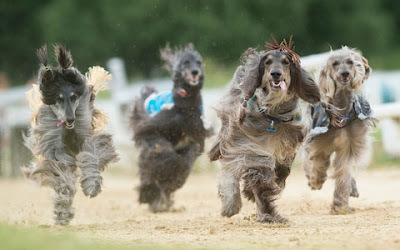
Afghan Hound Behaviour and Temperament
The temperamentof the typical Afghan Hound tends to be aloof and dignified, but happy and intelligent and generally relatively playful. However, the Afghan Hound has a reputation among Dogtrainers for having a relatively slow obedience intelligence possibly due to their slightly stubborn nature. The Afghan Hound has a leaning towards independence and owners should not be surprised if their Dog sometimes chooses to ignore commands. The modern day Afghan Hound is said to have many Cat-like tendencies, loving to laze around the house and is generally much slower than its Middle Eastern ancestors. The Afghan Hound is seldom used for hunting in Europeand America today where they are one of the most popular domestic Dog breeds.

Afghan Hound Breeding
The Afghan Hound was first bred in the ancient deserts of Egypt and Afghanistan, where they were primarily used as hunters. The Afghan Hound was a favoured choice of Dog as they were able to outrun the majority of other animals, whilst being courageous hunters and were capable of thinking independently, often able to keep larger prey from escaping until the hunter arrived. The first domestic breeding of the modern day Afghan Hound was by an English officer station near Kabul, who later brought the Afghan Hound to the UK in 1925. A year later, the Afghan Hound was taken to America where its beauty and elegance made it one of the most prestigious breeds of domestic Dog in the States.The average litter size of the Afghan Hound is around 7 puppies, which are blind when first born.

Afghan Hound Interesting Facts and Features
When the Afghan Hound breed was first brought to America, its naturally independent nature led to it gaining a reputation for being untrustworthy. Today however, many of these traits are not quite as prominent in the breed as they once were. The high hip-bones of this Dog are thought to be one of the main reasons why the Afghan Hound once had a reputation for speed, making them faster at running than most other domestic Dog breeds today. The long topknot on the top of its head, along with the small ring near the end of its tail, are two of the most distinctive featuresof the mature Afghan Hound. They originate from the mountains of Afghanistanand their unique appearance provides these Dogs with vital advantages during the cold winters and hot summers. Although beautiful, this long fur takes daily care and maintenance to ensure that the coat remains healthy.

Clancy's comment: A sleek creature, eh?
I'm ...


Published on September 10, 2018 15:01
September 9, 2018
10 September 2018 - POPE FRANCIS

POPE FRANCIS
G'day folks,
Welcome to some background notes on the current pope. Pope Francis (Jorge Mario Bergoglio) was elected Pope of the Catholic Church in 2013, he took the name Francis after Saint Francis of Assisi, who was known for his embrace of poverty and chastity.
Since his election, Pope Francis has stamped his own authority on the Church. In particular, he has sought to emphasize the traditional principles in the gospels of humility, charity and modesty. He has sought to encourage the church to place more emphasis on personal religious practise and concern for the poor, rather than issues related to abortion, contraception and homosexuality. He has personally rejected the more luxurious apartments in the Vatican, preferring to choose simple garments and live in more simple accommodation.
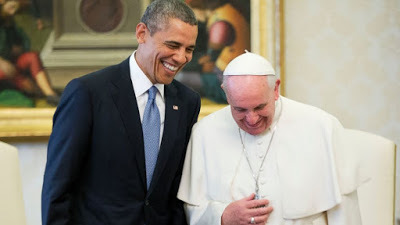
Jorge Mario Bergoglio was born in Flores, a suburb of Buenos Aires, on 17 December 1936.
He attended a technical secondary school, graduating with a diploma in chemistry. He worked as a chemist in a food laboratory for a few years.
In 1955 (aged 19), he began studying at a local seminary in Buenos Aires. On March 11, 1957, he entered the Society of Jesus (Jesuits) as a novice. He went to Santiago, Chile where he studied humanities. On March 12, 1960, he took his initial vows and officially became a Jesuit. During the 1960s, he worked as a teacher, teaching literature and psychology in Sante Fe, and Buenos Aires, Argentina.
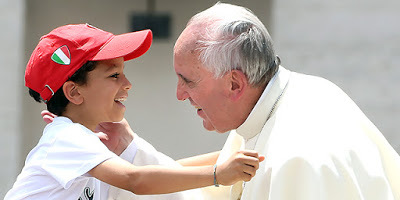
On 13 December 1969, after finishing his theological studies, he was ordained to the priesthood and became a professor of theology at the seminary of San Miguel. Bergoglio took his perpetual vows in 1973 and was appointed Provincial Superior of the Society of Jesus in Argentina from 1973 to 1979.
In 1992, he became Auxilliary Bishop of Buenos Aires, and in 1998 he became the Archbishop. As Archbishop he doubled the number of priests working in the slums of Buenos Aires. He was created cardinal by Pope John Paul II in 2001. He held the position of Archbishop of Buenos Aires until 2011, when he resigned because at the age of 75 it was necessary under church law.
Becoming Pope After the death of Pope John Paul II, Bergoglio was said to be a realistic candidate to become the new pope. But, instead, Cardinal Ratzinger was chosen. However, in 2013, Pope Benedict XVI announced his retirement. Bergoglio was elected on the Second day of the Papal conclave on 13 March. Explaining his choice of name, Pope Francis said of his patron saint: “The man who gives us this spirit of peace, the poor man,… How I would like a poor Church, and for the poor”.

Pope Francis developed a reputation for humility and simplicity. He has often chosen to live in simpler accommodation and rejected the more palatial bishop’s residences. When elected Pope, he preferred to stay in his current accommodation and didn’t move into the Vatican suites. As Archbishop, he took public transport and engaged in the Holy Thursday ritual of washing the feet of the poor, whether in jail or hospital.
He has expressed a strong commitment to social justice, arguing that the gospels express an important commitment to reaching out to the disadvantaged of society and working to improve conditions of the poor.
Doctrinally, he is considered a conservative. As archbishop, he instigated pro-life work to prevent abortion. In 2007, he criticised the Argentinian government when it intervened to allow an abortion for a mentally handicapped woman who had been raped.

But, on coming to be Pope, he has spoken about the need for the Chuch to move on from its obsession with issues of sexuality. Pope Francis has said that social work and religious devotion is much more important, and if the church gets entangled with issues of sexuality, it could fall away.
Ecumenical work Pope Francis sees improving dialogue between different faiths and religions as an important work of the Catholic church. He has stated that his title ‘Pontiff’ means ‘builder of bridges’ and he has sought to reach out to both non-believers and other religious leaders. People have commented he is sincere and has a strong capacity to create meaningful dialogue, especially with the Eastern Orthodox churches.

After his election, leaders of the Islamic community in Buenos Aires welcomed the news saying he “always showed himself as a friend of the Islamic community”, and a person whose position is “pro-dialogue”.
As Pope, he has raised the issue of corruption within the church and has warned that as Pope he will not tolerate ongoing corruption and that the punishment for corrupt people should be as, it mentions in the Bible, being tied to a rock and thrown into the sea. He has announced changes to the Vatican bank to make it more transparent. Some argue that the Mafia use the bank for money laundering and are concerned by the Pope’s investigation.
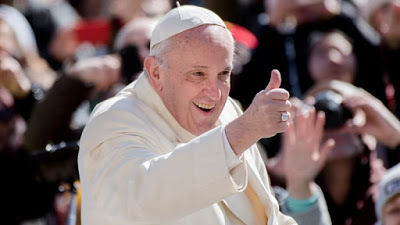
On social issues, he has indicated a more liberal attitude to homosexuals. In an informal press conference, he said that he personally does not judge people because of their sexuality. Though church teachings on homosexuality remain.
Pope Francis has frequently reiterated the importance for Catholics to wholeheartedly embrace and profess in Jesus Christ as their salvation. He has said that prayer should not be reduced to a weekly 20 minutes, but should become part of life. He has stressed the importance of rejecting worldliness and putting spiritual principles first.
He has criticised unbridled capitalism and argues that the ‘cult of money’ is making people miserable. He has criticised the growing inequality within many societies.

Clancy's comment: He's a breath of fresh air.
I'm ...


Published on September 09, 2018 15:19
September 8, 2018
9 September 2018 - PRUDISH VICTORIAN BATHING MACHINES

PRUDISH VICTORIAN BATHING MACHINES
G'day folks,
P icture that moment when you finally get to the beach after a long winter, excitedly peel off your clothes, run madly towards the water and crash into the salty waves without a care in the world … this is not that.
If you were a beachgoer in Georgian or Victorian times, more specifically, a female beachgoer, your day at the seaside would’ve likely had all the fun sucked out of it by a little invention known as the bathing machine.
 At its peak of popularity, the purpose of the bathing machine was all about those crazy rules of bathing etiquette that they upheld in the 18th and 19th century, which kept women and their beach bodies out of sight (while the men frollicked freely on the beach, of course). The wooden carts with two doors on either sides allowed bathers to change out of their clothes and into their bathing suits without having to be seen by the opposite sex walking across the beach in ‘improper clothing’, which in those days, on the gender-segregated beaches of Europe, would have been the modern-day equivalent of the walk of shame.
At its peak of popularity, the purpose of the bathing machine was all about those crazy rules of bathing etiquette that they upheld in the 18th and 19th century, which kept women and their beach bodies out of sight (while the men frollicked freely on the beach, of course). The wooden carts with two doors on either sides allowed bathers to change out of their clothes and into their bathing suits without having to be seen by the opposite sex walking across the beach in ‘improper clothing’, which in those days, on the gender-segregated beaches of Europe, would have been the modern-day equivalent of the walk of shame. The four-wheeled box would be rolled out to sea, usually by horse or sometimes human power and hauled back in when the beachgoer signalled to the driver by raising a small flag attached to the roof. Some machines were equipped with a canvas tent lowered from the seaside door, capable of being lowered to the water, giving the bather greater privacy.

Once deep enough in the surf, our bather would then exit the cart using the door facing away from prying eyes on the beach and proceed to paddle. For inexperienced swimmers (which would have been most Victorian women in their billowing swimwear), some beach resorts offered the service of a “dipper”, a strong person of the same sex who would escort the bather out to sea in the cart and essentially push them into the water and yank them out when they were done. As long you as you didn’t drown, for the average Victorian, this sobering experience could be considered a successful day at the beach.
Bathing machines began popping up around the 1750s when swimwear hadn’t yet been invented and most people still swam naked. But even when early forms of swimwear did start being introduced, society conveniently decided that a ‘proper woman’ should not be seen on the beach in her bathing suit. Totally logical.
At their most popular, bathing machines lined the beaches of Britain and parts of the British Empire, as well as France, Germany, the United States and Mexico.


When legal segregation of bathing areas in Britain ended in 1901 and it finally became acceptable for both genders to bathe together, it was the beginning of the end for the bathing machine. By the the 1920s, they were almost entirely extinct, only finding use catering to an elderly clientele.
The interior is all done in snow-white enamel paint, and one-half of the floor is pierced with many holes, to allow of free drainage form wet flannels. The other half of the little room is covered with a pretty green Japanese rug. In one corner is a big-mouthed green silk bag lined with rubber. Into this the wet bathing-togs are tossed out of the way. There are large bevel-edged mirrors let into either side of the room, and below one juts out a toilet shelf, on which is every appliance. There are pegs for towels and the bathrobe, and fixed in one corner is a little square seat that when turned up reveals a locker where clean towels, soap, perfumery, etc. are stowed. Ruffles of white muslin trimmed with lace and narrow green ribbons decorate every available space.


In an era of Brazilian bikinis and topless beaches, you wouldn’t think to find any trace of the bygone bathing machines, but think twice the next time you go to the seaside and use the services of changing cabin. Some of the bathing machines have indeed survived to this day as beach huts. Those adorably photogenic and colourful little beach houses? They’re direct successors of the Georgian bathing machine! When they were no longer needed for being carted out to sea, many were simply stripped of their wheels and plonked permanently back on the beach– a little-known reminder of eccentric seaside history.

Clancy's comment: Ah, how times have changed, eh?
I'm ...


Published on September 08, 2018 17:43
September 7, 2018
8 September 2018 - JOSEPH CARRABIS - GUEST AUTHOR
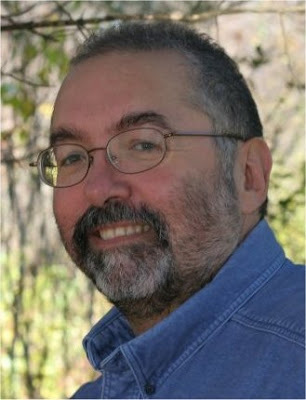
JOSEPH CARRABIS- GUEST AUTHOR -
G'day folks,
Today I interview an author with a wicked humour. Welcome, Joseph ...
1. TELL US A LITTLE ABOUT YOURSELF AND YOUR WRITING JOURNEY.
I started writing because my sister fell in love with a book. She shared her love of the story with me and I (less than 10 years old at the time) was awestruck that something could claim my sister the way that book did. I wanted to give others that incredible joy, that breathless experience of wonder, my sister shared with me. I've written about this in Mission of the Heart and How My Sister Got Me Started Writing (Note: this one requires subscription for full content).
2. WHEN AND HOW DID YOU BECOME A WRITER?
I don’t know if someone hit a switch and poof! I became a writer. I remember making up stories as a child. Some were survival lies (“No, I didn’t take that last cookie. It was...”), some were stories to get my teachers’ attention. I performed little one-person plays in grade school. Magnificent failures, some of those. Magnificent successes, also. Great learnings, in all cases.
I remember writing short comedies in Ms. McCarty’s 6th grade class. One that still tands out; “Batman and Robin” was on TV at the time so I wrote a parody (didn’t know the word back then) entitled “Flatman and Ribbon”. Villians included The Rattler (The Riddler) who shook his butt before he struck and The Jacker (The Joker) who lifted cars off the ground with a carjack he carried around. Flatman and Ribbon had to save Flatgirl at some point because her Living Bra (that was a product advertised on TV at the time. No idea if they still exist) attacked her. Fortunately, her Living Girdle (a similar product) came to her rescue.
I remember getting to that line about the Living Bra and Girdle and Ms. McCarty, who’d been laughing her head off as I read the story, had to sit down. She couldn’t catch her breath. The whole class was laughing. It was glorious.
In 7th grade I had a crush on a student teacher (don’t remember her name) and wrote a book of poetry for her. No idea where those poems are now (thank goodness). Other than that I wrote lots of book reports in 7thand 8th grade. I don’t remember writing much, unless it was a direct ripoff of some book I’d read. Good practice, though, copying from something you like.
This brings us to high school. I wrote one story in my sophomore year. Mrs. Baraniak loved it and told me to submit it to the school yearbook. I told her they’d reject it. She argued with me until I gave in. They rejected it. I told her they rejected it and she yelled at me. Great encouragement, that. I knew they’d reject it because I’d taken a poetry class with the teacher sponsoring the yearbook and she hated my poetry. Openly loathed it. So did many of the students in the class. It didn’t matter that I was experimenting with structure as suggested in our textbook, I wasn’t writing about unrequited love, about coming of age, about hairs sprouting from strange places. I was writing poetry about the Viet Nam war, Woodstock, the US v USSR space programs, such completely imbecilic stuff (I was told).
It’s amazing I stuck with writing, come to think of it. Anyway, I did.
3. WHAT TYPE OF PREPARATION DO YOU DO FOR A MANUSCRIPT? DO YOU PLAN EVERYTHING FIRST OR JUST SHOOT FROM THE HIP?
I discuss this in It’s Autobiography...I swear! In a nutshell, I do both. My creative process seems to work such that complete stories - even novels - come to me whole cloth. Sometimes I’ll get major scenes, finales, openings/endings with nothing in the middle, ... yet there’ll always be enough for me to build a complete story.
Once I have this whole cloth documented, planning begins. Even stories that come to me complete require some editing, some cohesive sections to bind everything together.
I’d love to write that some things never require any work. Everything (that I write, anyway) can use a little cosmetics.

4. WHAT DO YOU ENJOY MOST ABOUT BEING A WRITER?
Also covered in It’s Autobiography...I swear!I consider myself boring and dull...except when I’m writing. The act of creation, of using my imagination, is magic to me. I’m always amazed at what my non-conscious produces.
5. WHAT IS THE HARDEST THING ABOUT BEING A WRITER?
Hmm...Hmm...Hmm...I’d probably go with over-analyzing (over editing) your own work. There’s a quote I love that applies to this; Stop watering dead plants.
6. WHAT WERE YOU IN A PAST LIFE, BEFORE YOU BECAME A WRITER?
My past in this life? See my LinkedInprofile. My past life before this life? Susan and I have wondered about this. For a while we thought she was a witch who was burned to death and I was her guardian and speared to death protecting her. Then one night we realized it was completely the other way around. I was speared to death and she was burned to death trying to protect me. My past long before this life? Star dust. You?
7. WHAT IS YOUR GREATEST WRITING ACHIEVEMENT?
Something yet to come, me thinks. I have so many stories waiting to come out.
The greatest of what I’ve already published? That depends. Which of your children do you love more? I wrote Dancers in the Eye of Chronos for Susan and it is a gem, me thinks. I love The Boy Who Loved Horses because of its overtones and use of inferred dialect. Ditto Them Doore Girls. Cymodoce is a favorite because of the humanity. The Goatmen of Aguirra because of the incredible ride it provides the reader. And this hasn’t touched on my children’s stories or poetry, examples of which are on my website.
Better yet...how about readers of this interview get a copy of my anthology, Tales Told ‘Round Celestial Campfires, and let me know which story is greatest (and why. You could win an autorgraphed book!).
8. WHAT ARE YOU WORKING ON AT THE MOMENT?
Oy. I’ve got some contracts on my desk for some of my work. I’m doing a final read of The Augmented Man, rewriting Empty Sky (because I’ve learned so much since I published it. So far I’ve only received excellent comments on it and still, I know it can be better so I’m having at it), Ritchie and Phyl - A Celebration of Life, A Raccoon’s Tale, a novel that doesn’t have a name yet and we’re not counting the short stories and poetry that keep popping up.
9. WHAT INSPIRES YOU?
Ha. I got into the habit of paying my bills when I was young. Far younger than that, I got a real Jones for food and shelter.
Seriously, what doesn’t inspire me? Are there days, are there hours or minutes or seconds where you’re not being deluged by wonder and joy? My god, then change your life, man, you’re missing out on more than you (or even I) can imagine!
10. WHAT GENRE DO YOU WRITE?
Ha again. I write autobiography. It gets published as fiction, fantasy, magic realism, poetry, childrens’ stories, science fiction, speculative fiction, conclusive non-fiction, ...
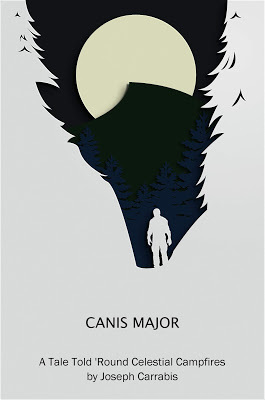
11. DO YOU HAVE ANY TIPS FOR NEW WRITERS?
Sirloin. Next would be read, Read, READ but there’s a caveat. First learn how to read. Read as an author, not as a reader. If you like something, figure out why you like it. If something moves you, figure out why it moves you. If you get bored by something, figure out why it bores you.
Next comes write, Write, WRITE and here’s the caveat; practice what you learn above, both good and bad. Practice until you can do the good as well as the authors you admire and practice the bad until it’s good.
So I guess my tip for new writers is the same I’d give old writers; practice, Practice, PRACTICE!
12. DO YOU SUFFER FROM WRITER’S BLOCK?
No, although I’ve had to duke it out with my characters every once in a while, something I call Labor Relations.
I do occasionally get stopped and it’s rarely for more than the time it takes me to walk the dog to clear my head. Should you get blocked, go back to the last point in your story where it “worked”, where it flowed, where the words just came out like a firehose and you could barely keep up. Forget everything you wrote after that point. Clear your mind, relax yourself, breath slowly and deeply.
Imagine that last scene/phrase/paragraph where it worked (close your eyes if you have to). Document everything that’s there on a separate page or screen. Now start writing one line sentences of what happens “next”. Then “next” after that. And “next” after that.
Just let it happen. Remember to stay relaxed.In other words, let the story happen.
Now go back to where your story last worked and add the new material you just documented. You’ll be fine.
13. DO YOU HAVE A PREFERRED WRITING SCHEDULE?
No, it’s one of those “when the iron’s hot” things and the iron always seems hot.
14. DO YOU HAVE A FAVOURITE WRITING PLACE?
Where ever paper, pen or keyboard are handy. Or recorder.
15. WHAT IS YOUR GREATEST JOY IN WRITING?
Aside from that not being boring and dull thing? Knowing someone has been moved by something I’ve written. When someone is changed by the writing, they’ve taken a piece of you with them. What’s better than that? Again, I talk about this in It’s Autobiography...I swear!
16. WHO IS YOUR FAVOURITE AUTHOR AND WHY?
There are so many. Pick one. Hmm... My favorite author is any author who makes the world go away when I’m reading their material. Depending on time, place and topic, those would include Micheal Crichton (“The Andromeda Strain” and “The Terminal Man”), Isaac Asimov (“I, Robot” and the original Foundation Trilogy, not much else), HG Wells (his major works), Ray Bradbury (earlier works), Jules Verne (everything, so far), any mythologies and folktales, Craig Johnson’s Longmire books (it’s impressive to follow his development as a writer through those books), Dashiell Hammett (although not everything), ... and these are just a sample, far from complete. AJ Budrys goes without mention so it’s best I remember to mention him.
17. WHAT’S THE GREATEST COMPLIMENT YOU EVER RECEIVED FROM A READER?
“Awesome!” as they laughed while crying.
18. WHAT WAS THE WORST COMMENT FROM A READER?
Worst as in useless? Hurtful? Ignorant? I’ve given up considering any comment as “worst”. If nothing else they reveal something about the reader, not the story, and that tells you who is/isn’t in your audience.

19. WRITERS ARE SOMETIMES INFLUENCED BY THINGS THAT HAPPEN IN THEIR OWN LIVES. ARE YOU?
Don’t suppose that’s why I entitled my inteview It’s Autobiography...I swear!
20. OTHER THAN WRITING, WHAT ELSE DO YOU LOVE?
My wife/partner/Princess, Susan, my pets, The Old Ones, cooking, music (both playing and listening), flying kites, reading, how long a list would you like? the ocean, the mountains, the Moon, ...
21. DID YOU HAVE YOUR BOOK / BOOKS PROFESSIONALLY EDITED BEFORE PUBLICATION?
Yes.
22. DESCRIBE YOUR PERFECT DAY.
A blend of writing, talking/spending time with Susan, walking the dog, playing with the cat, listening to music (and maybe playing some), a good cigar and a good Scotch, learning, a “safe” adventure, ...
23. IF YOU WERE STUCK ON A DESERT ISLAND WITH ONE PERSON, WHO WOULD IT BE? WHY?
Susan - so I could be guaranteed good conversation and help should I need it.
24. WHAT WOULD YOU SAY IF YOU HAD THE CHANCE TO SPEAK TO WORLD LEADERS?
Grow the fuck up, will you!
25. WHAT ARE YOUR PLANS FOR THE FUTURE?
Growing the fuck up, if I can.
26. WHAT ARE YOUR VIEWS ON BOOK TRAILERS? DO THEY SELL BOOKS?
I’m not sure what a “book trailer” is, which obviates any answer. Some people have sent me "book trailers". Those I tend to view with both eyes, facing forward. It helps.
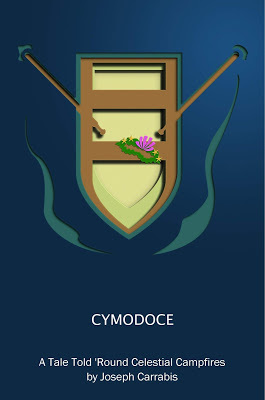
27. DO YOU SEE YOURSELF IN ANY OF YOUR CHARACTERS?
We’re getting back to that It’s Autobiography...I swear! thing.
28. DOES THE PUBLISHING INDUSTRY FRUSTRATE YOU?
Let’s say you see some people playing a game and want to join in. They’ve already established the rules of the game. If you want to play their game, you have to obey the established rules. You can create a new game with new rules and then you have to figure out ways to get the people already playing the original game with the original rules to give up their game - that they’re vested in - and play your game. You can destroy their game but it was their game your new game is based on so destroying it only serves to destroy the basis for any game you want to play.
Do you want the type of success the publishing industry affords? Then play their game. Do you want the type of success the publishing industry affords but don’t want to play their game? Better make sure lots of good players will join your game because good players draw good players. It does your new game no good if everybody who plays it is a hack who gives up the first time they bruise their knee.
29. DID YOU EVER THINK OF QUITTING?
Yes, long ago and far away.
30. WHAT WAS YOUR FAVOURITE MANUSCRIPT TO WRITE? WHY?
The next one. Because it’s brand new and I can learn from it!
31. HOW WOULD YOU DEFINE ‘SUCCESS’ AS A WRITER.
As a writer? Enjoying what I do and having people enjoy the results of what I do. Again, see It’s Autobiography...I swear!
32. WHAT SHOULD READERS WALK AWAY FROM YOUR BOOKS KNOWING? HOW SHOULD THEY FEEL?
ROFL, they should walk away knowing they’ll get the next book I publish. How should they feel? Lighter in the wallet for having done so.
Hmm...these are tough ones.
Knowing they were in the hands of a craftsperson? NO, WAIT, I HAVE IT! - Knowing themselves better. I’m repeatedly told I don’t write fluff and good for me because I don’t want to. Even my published humor pieces (Winter Winds and Power Unlimited are examples) are meant to make people think, emote, feel, ... I don’t write quick snacks, I write sit down and savor meals. At least that’s my intention.
33. WOULD YOU LIKE TO HAVE YOUR BOOKS MADE INTO MOVIES? EVER WRITTEN A SCREENPLAY?
I'd enjoy watching and taking part in the process, as a student. Screenwriting and moviemaking are entirely different disciplines from authoring. I have no idea how much carry over there is.
Yes, I wrote a ST:TNG episode based on an unpublished short story. It was agented the year ST:TNG went off the air. Great timing, huh?

34. HOW MUCH THOUGHT GOES INTO DESIGNING A BOOK COVER?
Ask a bookcover artist. I may make suggestions and so far I’m more impressed by what the bookcover artists come up with than anything I suggest.
35. WHAT’S YOUR ULTIMATE DREAM?
I'm not sufficiently advanced as an author to describe my ultimate dream in the space allotted.
36. WRITING IS ONE THING. WHAT ABOUT MARKETING YOU, YOUR BOOKS AND YOUR BRAND? ANY THOUGHTS?
This is another subject that requires its own expertise. I will offer that it’s tough to self-market when you self-define as “boring and dull”.
37. ARE YOUR BOOKS SELF-PUBLISHED?
The most recent and not all.
38. DESCRIBE YOURSELF IN FIVE WORDS.
6 feet tall, 225 pounds
39. WHAT PISSES YOU OFF MOST?
Self-imposed Ignorance. People who don’t want to learn, to know. Close on Ignorance’s heels is self-imposed Incompetence; people who won’t do, won’t attempt, will say they can’t because they’re too afraid of failing to chance success.
40. WHAT IS THE TITLE OF THE LAST BOOK YOU READ? GOOD ONE?
I tend to read several books simultaneously. Janet Burroway’s “Writing Fiction” was a gem. Dashiell Hammett’s “The Glass Key” wasn’t. His “The Thin Man” is wonderful. Paul Darcy Bowles “Storycrafting” is magnificent.
41. WHAT WOULD BE THE VERY LAST SENTENCE YOU’D WRITE?
I buried the gold behind the...

42. WHAT WOULD MAKE YOU HAPPIER THAN YOU ARE NOW? CARE TO SHARE?
Hmm...Happier? Hmm...
Ah, more time. Not in the sense of a longer life, my people are fairly long lived as it is. More time in the sense of learning, understanding. Compassion. Time to love more, love better. To give to others. To hold what is dear and let go what is not. Hey! Did I just write that ultimate dream thing? Hmm...
43. ANYTHING YOU’D LIKE TO ADD?
(infinity) + (infinity + 1)

WEBSITE
AMAZON

Clancy's comment: Thanks, Joseph. Good luck, and I wish you great book sales. By the way, I wouldn't worry about growing up.
I'm ...


Published on September 07, 2018 15:18
September 6, 2018
7 September 2018 - MARGARET HILDA THATCHER
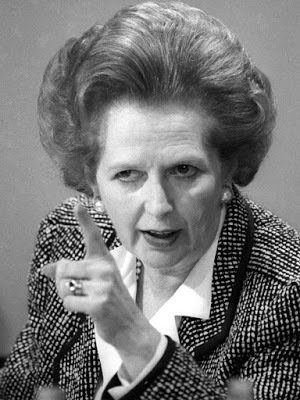
MARGARET HILDA THATCHER
G'day folks,
Welcome to some facts about a woman dubbed as the Iron Lady. Margaret Thatcher (1925-2013) was Britain’s first female prime minister (1979-90). She was known for her tough uncompromising, conservative political views, and became dubbed as ‘The Iron Lady’. On the UK domestic front she instituted many free market reforms, implemented the controversial poll tax and reduced the power of trades unions. In international affairs, she cultivated a close relationship with American President Ronald Reagan and also developed a working relationship with Russian leader Mikhail Gorbachev as the Cold War drew to a close.
Early life
Margaret Hilda Roberts was born 13 October 1925 in Grantham, Lincolnshire. Her father owned a grocery store and was active in the local Methodist Church and Liberal politics. Margaret won a scholarship to the local Kesteven and Grantham Girls’ School, where she became head-girl. She applied to Somerville College, Oxford University, and was accepted to study chemistry in 1943. She graduated in 1947 with second-class honours. During her time at Oxford, she was elected President of the Oxford University Conservative Association in 1946.
After graduating, she moved to Colchester, where she worked as a research chemist for BX Plastics. In 1951, she was invited to stand as the Conservative candidate in the safe Labour seat of Dartford. Although she lost, she impressed many in the party with her strong, articulate views. She also married Denis Thatcher in 1951. In 1953, she gave birth to two twins Carol and Mark.

Member of Parliament
In 1959, she was elected as MP for the seat of Finchley. Mrs Thatcher progressed through the ranks of the Conservative party to become education minister in Ed Heath’s government of the early 1970s. It was as education minister that Mrs Thatcher developed a rather crude nickname of “Maggie Thatcher – the milk snatcher” This was due to her policy as education secretary to end free school milk. However, although she was tipped as a rising star in the Conservative party, even as a cabinet minister, Mrs Thatcher proclaimed that Britain would never have a female prime minister.
However, just a few years later in 1975, Mrs Thatcher defeated Edward Heath and was elected leader of the Conservative Party, and she became the leader of the Opposition. During the 1970s, Thatcher became acquainted with the ideological ideas of neo-conservative economists – influenced by figures such as Hayek and Friedman, they proposed less government, lower taxes and an end to Keynesian economics. This gave Thatcher a strong ideological stance, which she used to influence party policy.

Prime Minister 1979-90
Mrs Thatcher was elected Prime Minister in the Conservative landslide of 1979. Mrs Thatcher wasted no time in introducing controversial economic policies. She believed that a strict implementation of Monetarism was necessary to overcome the economic ills of inflation and low growth, which she blamed on the previous Labour government. However, although she was successful in reducing inflation, deflationary monetary policies caused a serious economic recession, in which unemployment rose to 3 million. Opinion was strongly against many of her policies. In a famous letter to the Times newspaper, 360 economists wrote a letter arguing the government should change its policies immediately. However, in true Thatcher style, she refused.

Instead, she stood up at the Conservative party conference and stated: “You turn if you want to, but this lady is not for turning.” It was characteristic of her whole premiership – fierce in her beliefs and unwavering in her commitment.
In the midst of the recession, the Falklands islands were invaded by the Argentinean army. Mrs Thatcher sent a British expeditionary force to reclaim the islands. With relatively light casualties (although many hundreds died in the conflict) the islands were retaken. This military victory brought a fillip in support for Thatcher. However, it is worth noting she was criticised for both her decision to sink the Belgrano (which was sailing away from the conflict zone) Others also criticised her triumphalist spirit.

Another defining feature of the early Thatcher administration was her battle with trades unions. Thatcher wanted to reduce the power of trades unions; in particular, she wished to reduce the influence of the militant mineworkers union, the NUM, led by Arthur Scargill. Mrs Thatcher prepared the country for a long strike; when the miners went all out on strike in 1984, they were eventually forced back into work after a year-long bitter struggle.
In foreign policy, she got on well with American President Ronald Reagan. They often met and talked of a ‘special relationship’ between the US and UK. Mrs Thatcher also expressed respect for Russian President Mikhail Gorbachev. She famously said of Gorbachev, that ‘he was a man who we could do business with’.
Mrs Thatcher visited the Soviet Union in 1987, and was well received with thousands turning up to see the Iron Lady. The term ‘Iron Lady’ was initially designed as a critical label by a Russian newspaper in regards to Thatcher’s criticism of the USSR, but Thatcher seemed to revel in the label, and it stuck.
On a domestic front, the remaining years of her premiership were overshadowed by her controversial and dogmatic decision to stick with the poll tax. This was widely regarded as an unfair tax because everybody paid the same amount regardless of income. Opposition to the poll tax spilt over into violent protest and her popularity plummeted.

Because of her declining popularity, she was eventually forced out as leader of the party and PM in 1990. Although she was bitter about her perceived betrayal, she left an unprecedented mark on the UK economic and political landscape. For good or ill, she changed the British economic and political situation. In particular, Thatcher marked a break with ‘One Nation Conservatism’ and the post-war consensus.
It is ironic that when Labour eventually regained power in 1997, it was largely due to the fact Tony Blairand new Labour took on board many of the economic policies that Mrs Thatcher had initiated. There was often a mutual respect between Mrs Thatcher and Tony Blair.
Thatcher died on 8 April 2013 at the age of 87 after suffering a stroke.

Clancy's comment: She was certainly someone who regularly waved her fist and her finger.
I'm ...


Published on September 06, 2018 14:26
September 5, 2018
6 September 2018 - FACTS ABOUT THE COMMON FLEA

FACTS ABOUT THE COMMON FLEA
G'day folks,
Welcome to some facts about a worldwide pest.

Quick FactsType: InsectDiet: BloodLifespan: 2 to 4 monthsSize: 1.5 – 3.3 mm longWeight: 0.45 mgScientific name: CtenocephalidesHabitat: On the skin of warm-blooded animals. Fleas can jump around 30 thousand times in a row!They can also jump very high. If they were human-sized then they would be able to jump over the Eiffel Tower with an acceleration force of 140G… That’s an acceleration rate 50 times greater than a rocket taking off into space!Fleas can lift objects 150 times heavier than their own body weight.Once adult fleas emerge from their puparia, they have approximately 7 days to find a blood meal or they will die.

Females can consume 15 times their own body weight in blood on a daily basis.Female fleas can lay about 2,000 eggs over the course of their lives, but are incapable of laying eggs until after their first meal.Once they have had their first blood meal, female fleas will lay their eggs within 35 to 48 hours.Flea eggs are usually laid directly on a host, often falling off and spreading the infestation to the surrounding environment.Over 2500 species of fleas have been identified by entomologists but many more are thought to exist. Entomologists are scientists who study insects.
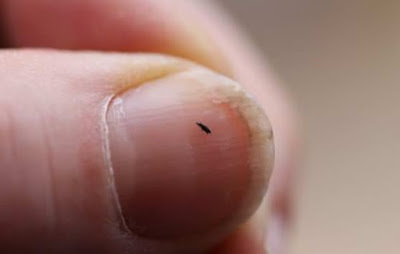


Clancy's comment: Mm ... Amazing little guys, eh?
I'm ...

Published on September 05, 2018 14:39
September 4, 2018
5 September 2018 - WEIRD AND CUTE STUFF

WEIRD AND CUTE STUFF
G'day folks,
Welcome to some more weird and wonderful stuff.
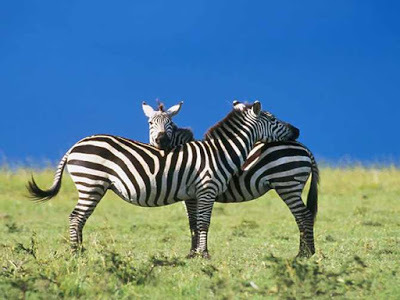
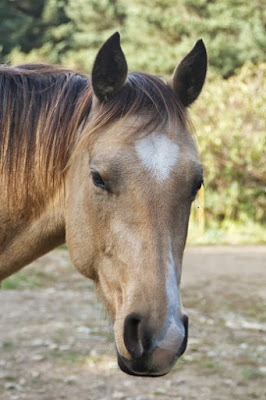

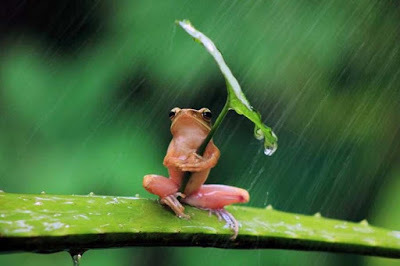







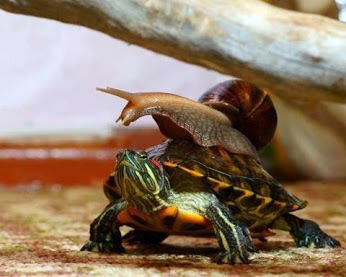



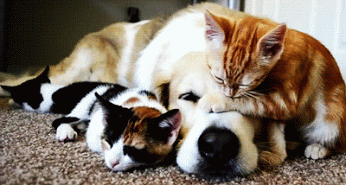
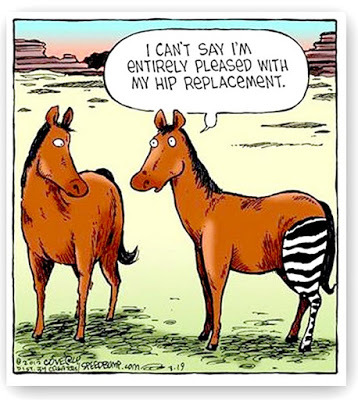

Clancy's comment: You just have to love kids, eh? So cute.
I'm ...
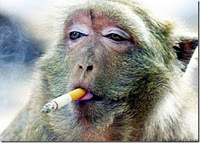

Published on September 04, 2018 14:25
September 3, 2018
4 September 2018 - TOYS FOR KIDS - 1850-1950

TOYS FOR KIDS - 1850-1950 -
G'day folks,
Ever wondered what kids played with a long time ago? I never have, but check out these cute items which are on sale on e-Bay.













Clancy's comment: There ya go. Interesting, eh? And, I guess these do not include the things that poorer kids played with. No doubt, they'd have made up things. The mini classroom was unexpected.
I'm ...


Published on September 03, 2018 16:27
September 2, 2018
3 September 2018 - THE FIRST MONIKINI
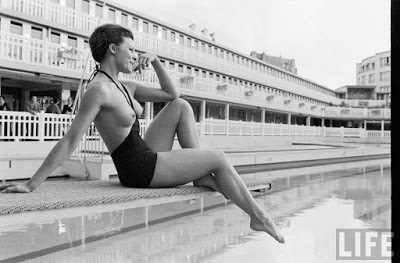
THE FIRST MONIKINI
G'day folks,
Amazing how fashions change.
W hen we think of the monokini today, we picture those fiddly one-piece swimsuits that give you awkward tan lines, popularised by the Kardashian and Hilton sisters. But the first monokini was in fact originally a topless swimsuit that exposed the female breasts, conceived in 1964 by avant-garde designer Rudi Gernreich, who predicted (rather accurately) that “bosom will be uncovered within five years.”

While the design initially had a harder time catching on in the United States (the first American model to pose in the swimsuit, Peggy Moffitt, received death threats), the monokini appears to have found itself more at home unsurprisingly in Paris, at the legendary Piscine Molitor, where the first bikini was revealed to the world nearly twenty years earlier in 1946.

The suit’s creator, Rudi Gernreich, was an Austrian-born American fashion designer and early gay activist who had learned about female fashion in his aunt’s dress shop in Vienna. Rudi and his mother fled Austria after its annexation to Nazi Germany, where Hitler had banned nudity, among many other acts. Austrian citizens were advocates of exercising nude, a rejection of the over-civilized world. Gernreich was very much against sexualization of the human body and the notion that the body was essentially shameful, which was reflected prominently in his designs.
Widely censored in the media and renounced from all corners including Vatican officials and the U.S Republicans, who tried to blame the suit on the Democrats’ stance on moral issues. Even the Soviet Union chimed in, calling it barbarianism. Never intended by the designer to be a commercial success, over 3000 monokinis at $24 were sold in New York in the summer of 1964 at leading store like Henri Bendel. The monokini greatly influenced the sexual revolution by emphasizing a woman’s personal freedom of dress, even when her attire was provocative and exposed more skin than had been the norm during the more conservative 1950s.

The Peggy Moffitt photograph became a celebrated image of the extremism of 1960s designs and raised the feminist issue of whether both genders should be allowed equal exposure above the waist. In its December 1962 issue, Sports Illustrated declared that Rudi Gernreich had “turned the dancer’s leotard into a swimsuit that frees the body. In the process, he has ripped out the boning and wiring that made American swimsuits seagoing corsets.”
It had all started the year prior in 1963 when the editor of Look magazine, Susanne Kirtland had asked Gernreich to make the suit to accompany a trend story along futuristic lines. When a photo shoot for his topless swimsuit was arranged on Montego Bay in the Bahamas, all five models for the session outright refused to wear the design. The photographer finally persuaded a local prostitute to model it. Only the back view of the monokini ended up being published in Look in 1964, but it was Kirtland who pursuaded Gernreich to produce the design commercially and make it available to the public.

In June of 1964, the PR manager of the Condor Nightclub in San Francisco gave one of the waitresses the monokini designed by Gernreich to wear for her act. At that moment, Carol Doda, a former prune picker became the first modern topless dancer in the United States. Within a few days, women in clubs all the Broadway St. clubs of San Francisco were sporting the monokini in many of the clubs lining San Francisco’s Broadway St, effectively reinventing the burlesque era of the early 20th century and ushering in the era of the topless bar.

Carol Doda was later arrested in 1965 for indecency which sparked a protest outside the police department calling for her release. The monokini had made the former prune picker a symbol of sexual freedom.
In the same year he released the monokini, Rudy also invented what we essentially know today as a seamless soft-cup elastic bra. The “No-Bra”, as he named it, was made of sheer-stretch fabric without underwires or lining of any kind. In 1972, he then designed the “No-Bra Bra”, which was made of sheer, stretchy fabric that could be pulled on over the head. His minimalist designed revolutionized bra design, changing the trend from a sculpted, bullet-shaped bosom to a more natural shape. (Thanks for that Rudy!)

Clancy's comment: Some photographers have tough assignments, eh? Oh, did you happen to notice the cameras they were using?
I'm ...
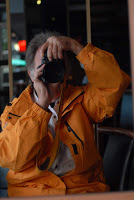

Published on September 02, 2018 14:49
September 1, 2018
2 September 2018 - SIR PAUL McCARTNEY
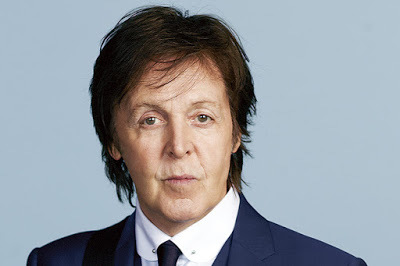
SIR PAUL McCARTNEY
G'day folks,
Sir James Paul McCartney CH MBE is an English singer-songwriter, multi-instrumentalist, and composer.
Paul McCartney (born 18 June 1942) is an English singer/songwriter and a key member of the Beatles. After the Beatles split up in 1970, he pursued his own successful solo career, recording with a variety of artists, including his group ‘The Wings’. According to the Guinness Book of Records, he is the best selling artist of all time.

Paul McCartney was born in Liverpool, 1942, and became interested in music from an early age. As a teenager, he was a budding singer-songwriter and became good friends with John Lennonand later George Harrison– this was to prove the nucleus of the Beatles. In the early 1960s, The Beatles began by playing gigs in clubs in Germany and Liverpool. It was at the Cavern Club in Liverpool where they were spotted by manager Brian Epstein. He secured them their first major recording contract with Parlophone (after many other record companies like Decca had turned them down)
It was playing at the Cavern club when Paul and John Lennon realised most groups were just doing cover versions, this inspired them to write their own music and this was a feature of the Beatles recordings for the next ten years.
In 1963, the Beatles soon shot to international fame and became one of the most recognised names in the world, especially after there visit to the US in 1964. At the peak of their fame, the Beatles followed a punishing schedule of recording, live performances and media interviews. The music of the Beatles captivated a new generation of music lovers, but also their free spirit and innovation captured the feeling of the 1960s and sense of breaking out of old forms and traditional ideas.

In 1966, the Beatles performed their last live tour in the US. They decided to stop live performances because of the hysterical screaming and attention of fans. This encouraged them to do more private recording.
In the late 1960s, the group spent more time in the recording studio. They also became more innovative, incorporating Eastern influences and new styles into their music. In 1967, the Beatles visited a meditation retreat by the Maharishi Mahesh Yogi. McCartney said of the experience.

In the late 1960s, there was also increased tension between Paul McCartney and John Lennon. Lennon and McCartney were the two major composers and writers, but they started to drift apart. McCartney struggled with Lennon’s heavy LSD usage and also resented Yoko Ono’s presence in recording studios. However, despite the personal tension, the late years of the Beatles produced some of the most memorable music of their career. It included ground-breaking albums such as Sgt. Pepper’s Lonely Hearts Club Band, The Beatles and Abbey Road.
However, by 1970, the Beatles had split, with Lennon the keenest to pursue a new direction. The break up was difficult for McCartney who experienced a period of depression. However, his new wife, Linda encouraged him to pursue a new career path. This involved forming a new band – The Wings, which lasted until 1981. During the 1970s, the Wings had major successes. The Mull of Kintyre was the first single to sell more than two million copies.
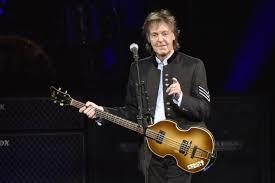
In the early 1970s, there was some lingering friction and competitive spirit between Lennon and McCartney, though they did reconcile for a period in 1974. McCartney was devastated by Lennon’s murder in 1980 and stated he wished he could have got to know him better.
Paul McCartney has produced over 60 gold discs and has sold over 100 million singles. His song ‘Yesterday’ from album Help! (1965) is the most covered song in history. Paul admitted that he had at times a difficult relationship with the media, in particular, he got fed up with all the questions about the Beatles.
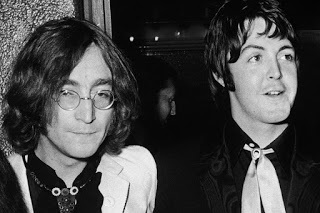
After marrying Linda McCartney in 1969, Paul became interested in vegetarianism and human rights. He has supported many animal rights charities. After Linda’s death from cancer in 1998, he recommitted himself to supporting Linda’s vegetarian food company and animal rights charities.
Paul remarried Heather Mills in 2002. But, by 2006, the British press reported their breakup which led to an acrimonious divorce. As one of the most recognised and successful musicians on the planet, Paul McCartney is in great demand for opening major venues. He performed at the opening ceremony of the London Olympics in 2012.

Clancy's comment: Mm ... A master.
I'm ...


Published on September 01, 2018 16:19



